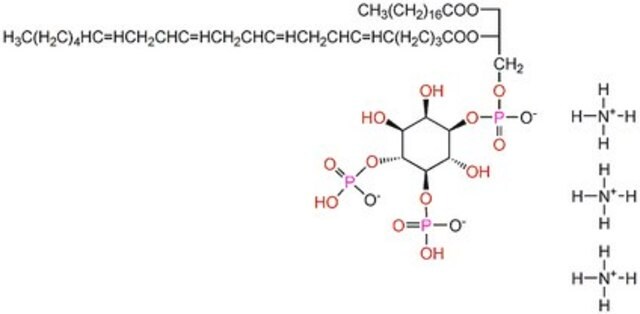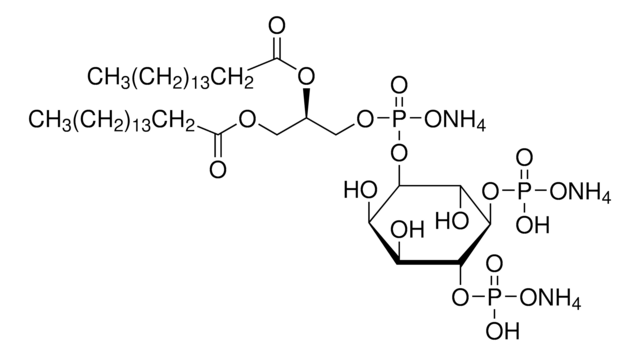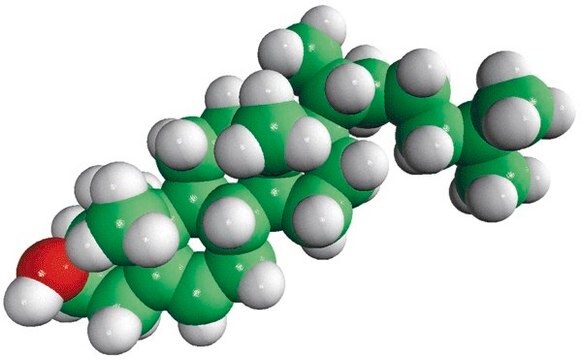850165P
Avanti
18:0-20:4 PI(4,5)P2
1-stearoyl-2-arachidonoyl-sn-glycero-3-phospho-(1′-myo-inositol-4′,5′-bisphosphate) (ammonium salt), powder
Synonym(s):
1-octadecanoyl-2-(5Z,8Z,11Z,14Z-eicosatetraenoyl)-sn-glycero-3-[phosphoinositol-4,5-bisphosphate] (ammonium salt); PIP2[4′,5′](18:0/20:4(5Z,8Z,11Z,14Z))
About This Item
Recommended Products
Assay
>99% (TLC)
form
powder
packaging
pkg of 1 × 100 μg (with stopper and crimp cap (850165P-100ug))
pkg of 1 × 500 μg (with stopper and crimp cap (850165P-500ug))
manufacturer/tradename
Avanti Research™ - A Croda Brand 850165P
lipid type
cardiolipins
phospholipids
shipped in
dry ice
storage temp.
−20°C
SMILES string
[H][C@@](COP([O-])(O[C@H]1[C@H](O)[C@@H](OP(O)([O-])=O)[C@H](OP([O-])(O)=O)[C@@H](O)[C@H]1O)=O)(OC(CCC/C=C\C/C=C\C/C=C\C/C=C\CCCCC)=O)COC(CCCCCCCCCCCCCCCCC)=O.[NH4+].[NH4+].[NH4+]
General description
Application
- in cryo-electron microscopy (cryo-EM) grid preparation
- in host 1-O-1-(Z)-octadecenyl-2-arachidonoyl-sn-glycero-3-phosphocholine (plasmenyl-SAPC) small unilamellar vesicles (SUVs) in the presence of H2O2 to activate cyt c plasmalogenase activity
- to study whether acyl chain types affect phosphatidylinositol 4,5-bisphosphate (PIP2) cluster formation
Packaging
Legal Information
Storage Class Code
11 - Combustible Solids
Certificates of Analysis (COA)
Search for Certificates of Analysis (COA) by entering the products Lot/Batch Number. Lot and Batch Numbers can be found on a product’s label following the words ‘Lot’ or ‘Batch’.
Already Own This Product?
Find documentation for the products that you have recently purchased in the Document Library.
Customers Also Viewed
Our team of scientists has experience in all areas of research including Life Science, Material Science, Chemical Synthesis, Chromatography, Analytical and many others.
Contact Technical Service













